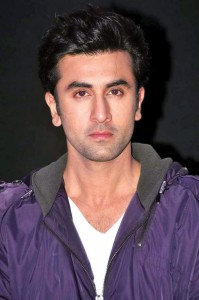Manil S Dodani tries to figure whether the Indian Super League is a panacea for Indian football or just another gimmick
Game after game after game, I realise now what’s most important in my life: Football. Show me something more thrilling than a perfect volley; tell me you’ve never dreamed of the immaculate strike and that passionate moment when an entire nation holds it breath. Tell me that football is not our one common language when the world stops for 90 minutes to be witness to that one special moment. You could tell me I’m wrong; some may say it’s just a game, but this is about heroes and tribes, loyalties and devotion; it’s our battle and our belief, our commitment and our passion; this is our faith.” Any football junkie would recognise that these are the opening lines from the classic FIFA 2006 gaming franchise. Personally, I don’t think there are any other words that can so succinctly describe how a football fan feels about this beautiful game. Heroes, tribes, loyalties, devotion, commitment and passion. These factors can take years to develop among fans and frankly, are much easier said than done.
The real question is that in a nation of over a billion people who revere cricket, can Indian league football evoke a similar response? Could we possibly witness the birth of Indian football’s very own Sachin Tendulkar during the course of the ISL? After the initial launch of the ISL, multiple questions were raised with regards to the financial viability, player sustainability and the long term reach of the ISL. Will the ISL really deliver what it promises? That’s one verdict that will have me glued to the idiot box until the last whistle.
THE LOWDOWN
The Indian Super League is a first of its kind football championship that brings together the love for football from across oceans and hemispheres alike. Enabling Indian and globally renowned footballers to play together in league style games, consisting of eight different teams named after Indian cities (à la IPL for the newbies). The teams are: Atletico de Kolkata, Chennayin FC, Delhi Dynamos FC, FC Goa, FC Pune City, Kerala Blasters FC, Mumbai City FC and Northeast United FC. The teams are named after cities based on the popularity of the sport in cities across India. The ISL is committed to two major initiatives: first, to promote the love for football with a world class domestic championship and second, to pledge organic growth to a ‘grassroots development programme’ in order to engage the Indian populace to pursue football in its true spirit and glory whilst ushering in a platform to unearth indigenous football talent. The ISL will have the eight different teams battle it out in a league format each day until the 10 December 2014, after which four semi-finalist teams will play to bag the final two spots in the finale. The ISL boasts of a whopping 15 crore rupees in cash prizes, with eight crores, four crores and three crores allocated to the winner, runners up and the two semi-finalists respectively.
WILL ISL GO THE IPL WAY?
India is a country where two religions co-exist, cricket and Bollywood. When these two heady religions combined they created a manic concoction of something that falls nothing short of extravagant, addictive and something that can keep a nation glued to their television screens for hours at a stretch – it created the Indian Premier League in 2008. Whether the IPL changed the way cricket is played is debatable, but what remains indisputable is that it changed the way stakeholders, players and the audience perceived a sport. One might argue that the ISL will revolutionise Indian football, just like the IPL did for cricket. The involvement of A-list celebrities like Ranbir Kapoor, John Abraham, Salman Khan and Varun Dhawan seems like another rabbit out of the IPL’s hat. Against that back story comes another sporting championship built on a similar formula with a slight twist: this time around, is it football that the nation will thump and roar for? Ladies and gentlemen, put your hands together for the Indian Super League.
“I know that the people there watch the Premier League and I’m convinced that with such a huge population, it will take off” Arsene Wenger, Arsenal FC
ISL- JUST WHAT THE DOCTOR ORDERED?
The widespread impact of mass communication and broadcasting has transformed the Indian lifestyle. From the acceptance of western apparel to the consumption of the English Premier League and La Liga, football viewership has come a long way to carving its niche in India. According to a latest report, a historic 170 million Indian TV viewers tuned in to the ISL during opening week. On day one, the ISL was viewed by approximately 75 million people – 12 times that of the opening day of the FIFA 2014 World Cup. These aren’t just figures that startle, these are figures that give one a direct insight into the untapped potential of football in a nation brimming with talent. The ISL clearly has a substantial role if not a vital one – to demystify the workings of Indian football and boost the growth of football clubs and training activities in India. Grooming talent fit for play at the national and international levels could become a harbinger of growth for the ISL. The ISL player mix ensures that every team features seven foreign players, one marquee player and four players from the local city (out of the 14 spots reserved in each squad for Indian players). This augurs well for Indian football as having international talent present can improve the quality of the game at the local level.
ISL – THE AIM
The ISL envisions to make India a ‘global football power and qualify for the 2026 FIFA World Cup’, along with refurbishing ports administration and marketing, inviting investments towards the development of the game and create a talent pool of skilled players that can represent India at various national and international tournaments. To quote cricketing legend Sachin Tendulkar, “ISL will change the face of Indian football”, surely, with the inclusion of international football superstars such as Luis Garcia, David Trezeguet, Freddie Ljungberg, Nicolas Anelka, Alessandro Del Piero and Robert Pires, a helping hand seems to be in play for our Indian footballers. To illustrate, Del Piero, an absolute legend of the game holds more than 19 years of competitive football experience under his belt and will certainly prove to be a vital asset for the Delhi Dynamos FC.
ISL – THE WAY AHEAD
The ISL makes it mandatory for team owners to invest in a grassroots development programme in the city of the team that they own. Under this programme, all the team owners have been asked to pool in Rs. 2 crore, along with the assigning of development managers who would be responsible for grooming and headhunting talent from the millions of potential football superstars that the workshop aims to reach. The All India Football Federation (AIFF) aims to raise the sports profiling standards in India by harnessing the impact of this workshop. Training and theory sessions in the workshop encompass the basic skills of football along with a solid dose of team spirit and motivation.
ISL – WEAR YOUR CITY’S COLOURS
The million dollar question is whether the country that FIFA President Sepp Blatter called a ‘sleeping giant’ has finally woken up? Will India embrace the world’s most popular sport and more importantly – will our denizens support the colors of Northeast United FC over Manchester United FC or Mumbai City FC over Barcelona FC? Only time will tell.
PITCH-SIDE VIEWS
Football expert, Celebrity Manager and an ardent Manchester United fan
Whether the ISL will provide the much needed impetus to football and put India on the global football map is yet to be seen. Mayur Desai a football expert, relays his opinion: “The overall packaging of the league has been top notch. There is already enough consumption of European leagues by audiences in India and the ISL will bridge the gap between Indian and world football. It has already generated enough noise and people have taken notice. From a marketing/PR standpoint, it is quite a success. Surely, the world has its eye on India and sees tremendous potential here. In the short term, it will give the Indian players some valuable exposure of playing with top professionals, a new level of preparedness for games whereas towards mid- term and long term, more children will consider football as a profession.
That’s where I feel ISL will play a valuable role. If this doesn’t lift the game in India, I don’t know what will?!”
On the stark similarities between the ISL and IPL business models he says, “I’d say the IPL derived a lot more from football than the other way around. The spectator value of the sport also counts, if it’s a good sport to play but not to watch, then that’s a problem. As for the celebrity involvement, I don’t see it as a negative at all, if they can pull crowds to the stadium then it’s only a plus; I’m confident the beautiful game will do the rest.” We asked Mayur if he thinks that the ISLs grassroots initiative will actually take flight or never get off the ground. He quips, “The ISL has made it mandatory for all teams to invest at the grassroots level, so that’s a positive. The franchises will then become epicentres of developing talent in their respective catchment areas and that will eventually add to the community feel of every club. Imagine having a Mumbai lad playing a crucial role for Mumbai City FC and then going on to score a winning goal for the national team – that would be something.”
Football junkie, Rylan Rodrigues is a 19-year-old football fan who was a 2010 import at Manchester United Soccer School, UK.
Football as a game has found a strong fan following amongst the youth today who swear by the sport and pursue it in all its glory. We ask Rylan Rodrigues if the ISL would serve as an encouragement for younger players. He replies, “It will definitely encourage young players as they have only seen marquee players of the likes of Del Piero, Anelka on TV, but now, thanks to the ISL, players will be given the chance to play with these internationally recognised players.” He adds excitedly, “Mumbai City FC will be a treat to watch because of the slew of amazing players that are part of the team.”
WOULD YOU RATHER WATCH AN ISL MATCH OR AN EPL/ LA LIGA MATCH?
Yes, I would prefer an EPL match over ISL. As, there is a huge difference in the quality of football and players, ISL will take many years to compete with EPL. Pramod Vishwakarma
EPL match, if the club that I support is playing. Else it could go either way EPL or ISL. Raul Pinto
Volume 4 Issue 5
































